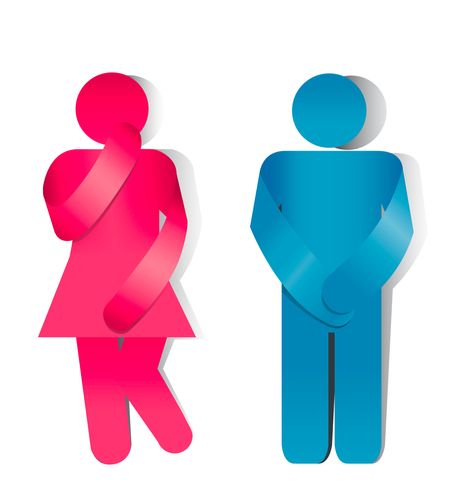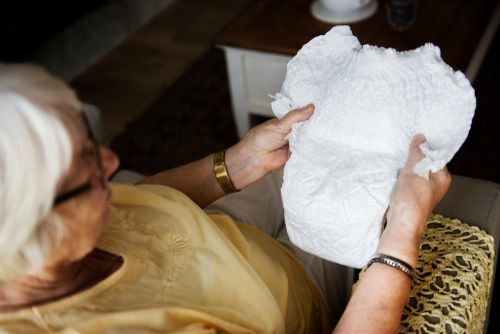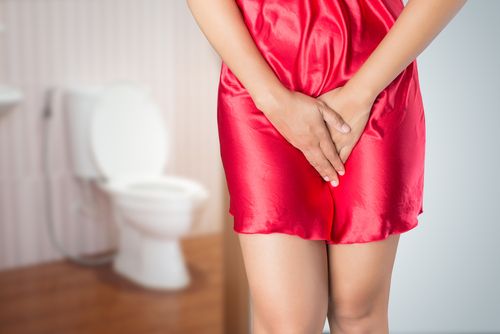 Written by Hulet Smith, OT
Written by Hulet Smith, OT
If you are struggling with incontinence issues, you are definitely not alone. While most people find this medical condition embarrassing and hard to talk about, it’s actually a fairly common problem that will affect as many as 1 in 4 women, and 1 in 10 men in their lifetime.
As a symptom, incontinence always has one or more underlying causes, and it’s important to consult with a physician to identify the root cause, and determine an appropriate care plan. When addressed properly, incontinence can often be treated and managed effectively.
Incontinence is defined as a lack of control over urination and/or bowel movements, or in plainer terms, an inability to contain urine or fecal matter until you make it to the bathroom. It can be temporary or chronic, and is described in varying levels of involvement, from mild to severe.
Urinary incontinence is more prevalent than fecal incontinence, with about twice as many women reporting problems with urinary incontinence than men. Over 50 percent of older Americans are affected by accidental urinary or bowel leakage, even though incontinence is not a normal or inevitable aspect of aging.

There are a number of reasons and root causes for why urinary or fecal incontinence happens, including weakened muscles in the urinary and intestinal systems. Women are more likely to develop problems, as the female continence mechanism is shorter and more difficult to control than in the male system. In addition, pregnancy and childbirth often weaken the support of the urethra and bladder, while menopause sometimes further diminishes strength in these same areas.
Other causes that contribute to incontinence symptoms include:
When their patients present with some level of urinary or fecal incontinence, physicians generally utilize options like biofeedback, pelvic floor strengthening exercises (Kegel), bladder training, dietary changes/bulking agents, and electrical stimulation before any more invasive or aggressive treatment, such as surgery. Whether they get additional therapy or not, most people living with incontinence will need some support products to help them manage their condition.
Because it’s often considered such a personal and potentially embarrassing topic, many folks simply are not aware of what incontinence products are available. This article will help you determine which incontinence products are the best choices for your unique requirements and level of involvement, including underwear, pads, disposable sheets, and treatment devices.

The types of incontinence vary, and include urinary incontinence (UI) and fecal incontinence, which is also referred to as accidental bowel leakage (ABL) or bowel incontinence. More people are affected by UI, overall, but some can struggle with both UI and ABL at the same time. There are several different levels of urinary incontinence which can happen separately, or as a combination of the various types:
Described as a sudden and desperate need to urinate, urge incontinence may result from the bladder’s inability to retain enough urine. People affected by urge incontinence are unable to suppress this abrupt flow, and usually have no warning or sensations of needing to urinate ahead of time.
Most everyone has experienced stress incontinence at one time or another, which is a slight leaking of urine caused by laughing, sneezing, or coughing. It’s usually caused by a temporarily or chronically weakened bladder neck, and/or any prolonged stress on the abdomen. Stress incontinence often happens with exercise, or while lifting heavy objects, as well.
This type of incontinence ensues when the bladder muscle contracts without any sense of urge or warning, and either small or large amounts of urine are released involuntarily. Often resulting from nerve damage that inhibits proper brain signaling, the affected individual has no sensation of any need to urinate.
Frequently originating as a bladder obstruction or bladder muscle dysfunction, overflow incontinence occurs when an individual has difficulty with the mechanics of urinating, causing the bladder to be so full it overflows into the urethra. This type of incontinence also happens when the bladder is filled by the kidneys beyond capacity, before a person is able to use a bathroom, such as on a long car trip.
Functional incontinence is defined as incontinence that occurs as a symptom of not being able to make it to the bathroom in time to relieve oneself. This type of incontinence typically does not feature any problems with the bowel or bladder mechanism. It covers UI challenges resulting from a range of issues, including surgical recovery, mental disorders, taking medications, and restricted mobility.
Defined as continuous urine leakage, total incontinence often affects elderly people, and women more than men. All of the urine leaks out of the bladder involuntarily, and is sometimes caused by a communication disconnect between the vesicovaginal fistula and the bladder.

Support products for incontinence abound in today’s world, as a growing aging population finds more and more people affected by this condition. Advances in technology and manufacturing processes have helped to innovate the industry in all ways, from better absorbency and odor control in wearable protection to devices that help to strengthen the pelvic floor muscles.
Available in a range of styles and absorbency levels, the disposable underwear used for incontinence is usually more absorbent than washable styles, while it also saves on laundering costs. They come in pull-up styles for users who are more mobile, and winged, open, diaper-like configurations for those who require help from a caregiver. Some designs accommodate both urinary and fecal incontinence.
Typically thinner in design than disposable incontinence underwear, washable underwear for UI is intended for light to moderate involvement. It looks and feels like regular underwear, and is usually very attractive, comfortable, and breathable, with excellent moisture-wicking abilities to keep the urine away from the skin.
Disposable panty liners attach to the inside of a user’s own underwear, and are designed for lighter UI involvement. Disposable pads offer a greater absorption capacity than liners, and are specially configured to catch and retain more urinary leakage. Pads and liners can also be added to incontinence underwear for maximum protection.
Helping to save on laundry costs, disposable underpads and sheets are easy and efficient to use. They are used on a bed, sofa, or chair to absorb leakage from both urinary and fecal incontinence accidents, and protect furniture.
Just like their disposable counterparts, washable underpads provide exceptional protection for furniture and bedding against incontinence accidents. They typically have a waterproof barrier on the underside, and can be machine washed and dried for convenient reusability.
Specially formulated cleaning and deodorizing products for both urinary and fecal incontinence come in the form of personal wipes for the body, and a variety of disinfecting liquids and deodorizing sprays for cleaning bedding, pads, and clothing. They use ingredients specifically combined to inhibit harmful microbes, and get rid of odors.
Innovations in treatments for incontinence has resulted in several devices people can now use at home, such as the Elvie Kegel Pelvic Floor Exercise Trainer. This helps women to strengthen specific pelvic muscles, which will help in reducing stress incontinence. Other helpful devices like the Nytone Bedwetting Nocturnal Enuresis Alarm can help re-teach children, adults, and seniors to get up and go to the bathroom at night.

Choosing the best incontinence products for your personal and unique requirements requires a determination of several different factors:
Although there are many incontinence products that can be used by people of any sex, some wearable products have designs that are intended for specific body types. Be sure to choose the product that best fits your body, as this helps to reduce the risk of leakage.
Determining your incontinence type or types is key in finding the perfect incontinence support products. If you have fecal incontinence or both fecal and urinary incontinence, you will need to choose products specifically designed to accommodate those issues.
Determining the degree of involuntary flow you have will help you know the amount of absorption you need to find for protection. From light to heavy, most products will tell you the amount of liquid they can absorb before leaking occurs. At first, you will most likely have to estimate an approximate amount, but soon you'll be able to determine the right level for you to feel comfortable.
Are you okay with washing and reusing your underwear and underpads, or would your lifestyle and activity level better support disposable underwear and underpads? Also, it’s important to remember that while washable versions are often much more comfortable, they are better suited for light to moderate incontinence, while the disposable ones typically offer much more absorption for higher levels of incontinence involvement, and heavier flows.
People living with disabilities that inhibit movement will need to consider the best type of protective underwear to use. Pull-up styles that function like regular underwear are a good choice for those with the ability to pull them up and down, but the winged, open diaper styles are a better choice for those who require help from a caregiver with dressing and toileting activities.
Many disposable incontinence products have built-in odor control, including pull-ups, adult diapers, and underpads. You can also enhance odor control by using specially formulated wipes, sprays, and deodorizing products for the body and the bedding, underpads, and clothing.
When urine and other moisture is in constant contact with skin, it can cause infections and skin breakdown, especially in more sensitive genital and anal areas. Be sure to choose disposable underwear if this is a higher concern, as they are usually designed with wick-away technology to keep moisture from direct contact with the skin.

The best way to stop coughing incontinence is to practice Kegel exercises. This strengthens the muscles of the pelvic floor, which will help stop involuntary leakage when coughing, sneezing, and laughing, or when lifting heavy items, and during exercise. Also known as stress incontinence, this has been linked to obesity, and to temporarily or chronically weakened muscles, so strengthening these muscles can help.
Yes. Urinary incontinence can often be reversed, cured, or controlled. Always talk to your healthcare provider about any changes with either urinary or fecal continence changes you may be experiencing, as incontinence is always a symptom of an underlying condition. Incontinence is rather common, especially in women and older adults, and there may be a number of therapies your doctor will recommend. Simple lifestyle changes and/or medical treatment can often stop incontinence problems.
Incontinence can be a symptom of many everyday habits, physical problems, or underlying medical conditions. Temporary UI conditions can be caused by certain medications, foods, and drinks, including caffeine, artificial sweeteners, alcohol, chocolate, citrus fruits, spicy foods, sugary foods, chili peppers, sedative drugs, heart and blood pressure medications, muscle relaxant drugs, and large doses of Vitamin C. Temporary medical conditions can also cause short durations of UI, such as urinary tract infections (UTIs), and constipation.
Physical changes can also cause either temporary or chronic UI, including pregnancy, childbirth, menopause, hysterectomy, obstruction, and problems with the prostate, such as enlarged prostate and prostate cancer. Neurological disorders, such as Parkinson’s disease, multiple sclerosis, a spinal injury, a brain tumor, and recovery from stroke can also interfere with the nerve signals connected with bladder control or fecal control, causing incontinence.

Even though it can be an embarrassing subject to discuss, incontinence is something a lot of people will have to deal with at one time or another in their lives. It is not a disease, and instead is a symptom of some underlying cause, either temporary or chronic, and should always be addressed with your healthcare provider. Both urinary and fecal incontinence can often be cured with the right approaches, or at least can be much better managed by those living with this challenge.
A wide variety of incontinence products will help you reduce leakage accidents and avoid embarrassing odors, such as reusable or disposable underwear, pads, underpads, and deodorizing wipes, sprays, and liquids. They’re available in a wide range of styles, sizes, absorption levels, and configurations to suit every individual and incontinence type. To compare different types of products and get ready to choose the right one for you, come visit Rehabmart.com, and be sure to check out our other educational articles at Caregiver University.
>> Shop Incontinence Underwear <<
Co-founder/CEO of Rehabmart, Pediatric Occupational Therapist, husband, and father. Passionate about connecting special needs kids with superb nutrition, sensory integration, and complementary health strategies. Excited about Rehabmart's mission to become the premier online educational platform which empowers caregivers by spotlighting innovative devices and interventions to achieve optimal patient response and recovery.